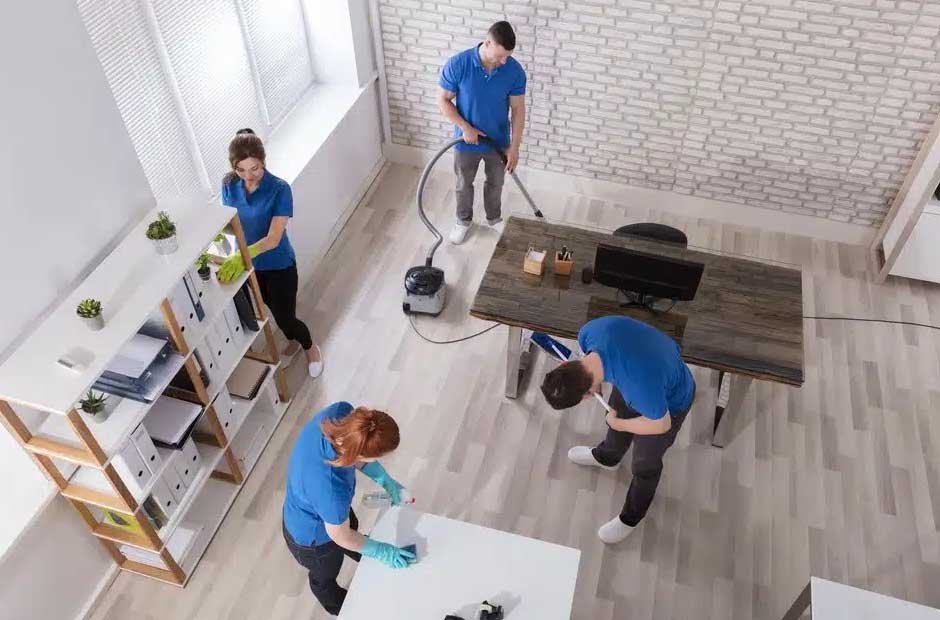The commercial cleaning industry has undergone a significant transformation in recent years thanks to technology integration. Traditional cleaning methods are giving way to innovative solutions that enhance efficiency, sustainability, and overall cleanliness. This evolution has been driven by the need for more effective cleaning practices, increased productivity, and a fixation on environmental responsibility. Professionals in the cleaning industry, such as https://www.keeperscleanaz.com/, increasingly leverage advanced technology to enhance their cleaning processes, enabling them to deliver more efficient and precise cleaning services to clients. We will delve into the profound impact of technology on modern commercial cleaning, examining how robotics, IoT devices, intelligent cleaning solutions, and data analytics are revolutionizing the industry.
1. Robotics in Commercial Cleaning
Robotic technology has made substantial inroads into commercial cleaning, proposing a range of benefits beyond mere automation. Francis Taylor Properties management professionals observes that robots are now being deployed for various cleaning tasks, from sweeping and vacuuming to mopping and disinfecting. These machines have sensors and algorithms that enable them to navigate complex indoor environments, sidestepping obstacles and modifying their cleaning patterns as needed.
One of the key advantages of robotic cleaners is their consistency. They can work tirelessly without fatigue, ensuring that cleaning standards are consistently met. Additionally, their programming can be fine-tuned to target high-traffic areas or specific zones that mandate more periodic cleaning.
Furthermore, robotic cleaners have proven to be cost-effective over the period, as they lessen labor costs and the need for human intervention. Nevertheless, they are most effective with human cleaning teams, with robots handling repetitive, time-consuming tasks and human workers concentrating on more detailed and specialized cleaning requirements.
2. Internet of Things (IoT) Devices
IoT devices have made their way into commercial cleaning, providing real-time data and remote control capabilities. Cleaning equipment and appliances are now equipped with sensors and connectivity features that enable facility managers and cleaning teams to monitor and supervise cleaning operations more efficiently.
For instance, IoT-enabled cleaning machines can provide data on usage, performance, and maintenance needs. This data helps in scheduling maintenance proactively, reducing downtime, and ensuring that equipment operates at peak efficiency. Additionally, sensors in soap dispensers and restroom facilities can alert cleaning staff when they require refilling, optimizing resource allocation.
IoT devices also play a crucial role in monitoring air quality and hygiene in commercial spaces. Smart sensors can detect air pollutants, temperature, humidity, and occupancy levels, allowing cleaning teams to respond to changing conditions promptly. This not only contributes to a healthier indoor environment but also enhances energy efficiency by tailoring cleaning and ventilation to actual needs.
3. Smart Cleaning Solutions
Smart cleaning solutions encompass an expansive spectrum of technologies to streamline cleaning processes and enhance efficiency. These solutions often integrate software, hardware, and sensors to assemble a connected ecosystem that automates tasks and enhances decision-making. One example is smart schedules, where cleaning tasks are optimized based on occupancy data and foot traffic patterns.
This ensures that cleaning resources are allocated where they are needed the most, reducing wastage and improving cleaning effectiveness. Furthermore, smart cleaning solutions can integrate with building management systems, permitting centralized control of diverse building functions, including lighting, HVAC, and security. This centralized approach enables better coordination between cleaning and other building services, leading to more efficient operations.
4. Data Analytics and Predictive Maintenance
Data analytics has emerged as a powerful tool in modern commercial cleaning. By collecting and analyzing data from IoT devices, sensors, and other sources, cleaning teams can gain valuable insights into cleaning patterns, equipment usage, and resource allocation. This data-driven approach enables more knowledgeable decision-making and helps optimize cleaning operations. Predictive maintenance is another application of data analytics in commercial cleaning. By monitoring the performance of cleaning equipment and analyzing historical data, maintenance needs can be predicted with greater accuracy.
This proactive approach reduces the hazard of equipment breakdowns, minimizes downtime, and prolongs the lifespan of cleaning machines. Additionally, data analytics can track cleaning performance and customer satisfaction. Cleaning companies can utilize customer feedback and performance data to continuously enhance their services and adapt to changing customer needs.
5. Enhanced Training and Communication
Technology has also enhanced training and communication within the commercial cleaning industry. Cleaning teams can access training materials and resources online, allowing for flexible and self-paced learning. Virtual reality (VR) and augmented reality (AR) are emerging technologies that propose immersive training experiences, enabling cleaners to practice their skills in a virtual environment.
Communication among cleaning teams and facility managers has been streamlined through mobile apps and software platforms. These tools facilitate real-time communication, task assignment, and reporting. Cleaners can use mobile devices to receive cleaning instructions, report issues, and access important information while on the job, improving efficiency and accountability.
Technology has ushered in a new era of efficiency, sustainability, and effectiveness in modern commercial cleaning. Robotics, IoT devices, smart cleaning solutions, data analytics, green cleaning technologies, and enhanced training and communication tools have altered how cleaning is conducted in commercial spaces. These innovations not only save time and resources but also contribute to healthier indoor environments and reduced environmental impact. As technology advances, the commercial cleaning industry is poised for further improvements in cleaning standards, customer satisfaction, and general sustainability.


